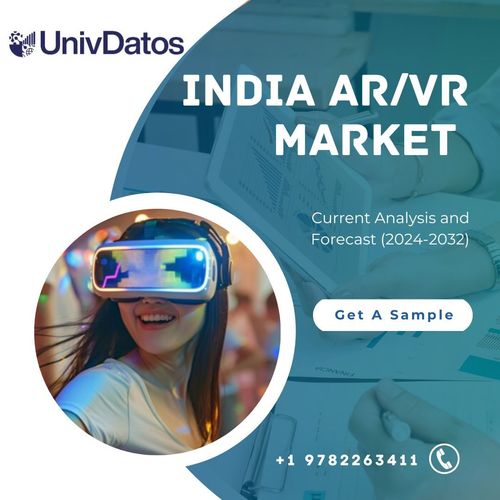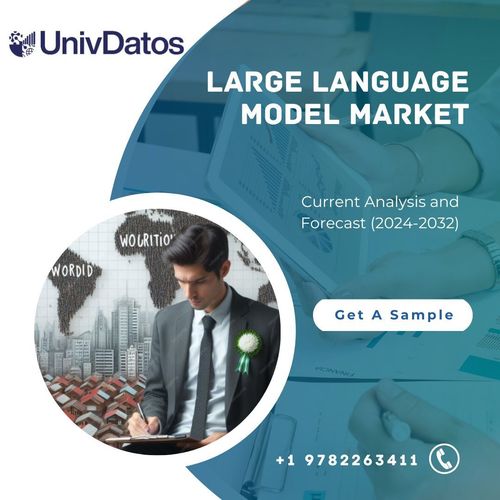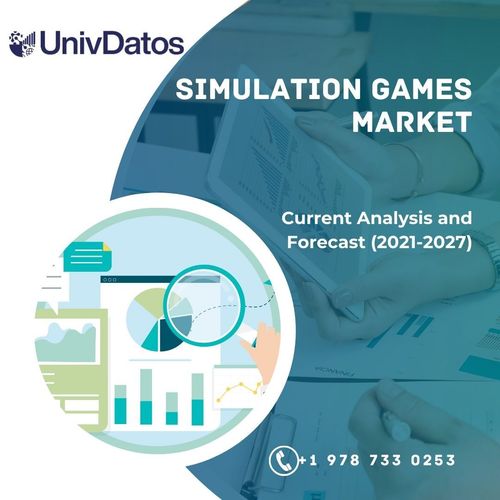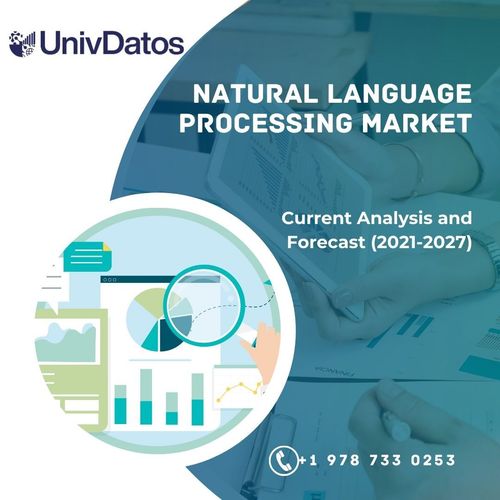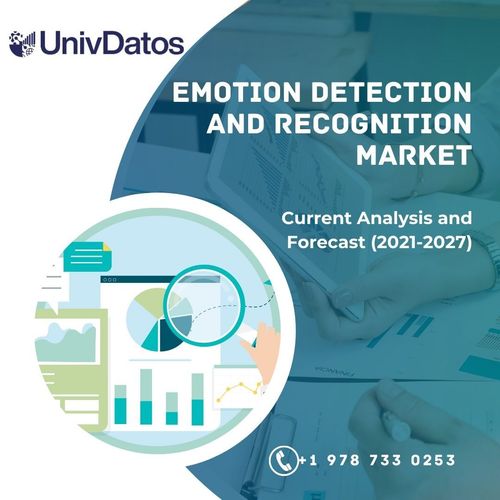Quantum Computing Market: Current Analysis and Forecast (2022-2028)
Emphasis on Component (Hardware, Software, and Services); Deployment (On-Premise and Cloud); Application (Machine Learning, Optimization, Biomedical Simulations, Financial Services, Electronic Material Discovery, and Others); End User (Healthcare, BFSI, Automotive, Energy And Utilities, Chemical, Manufacturing, and Others); Region/Country.
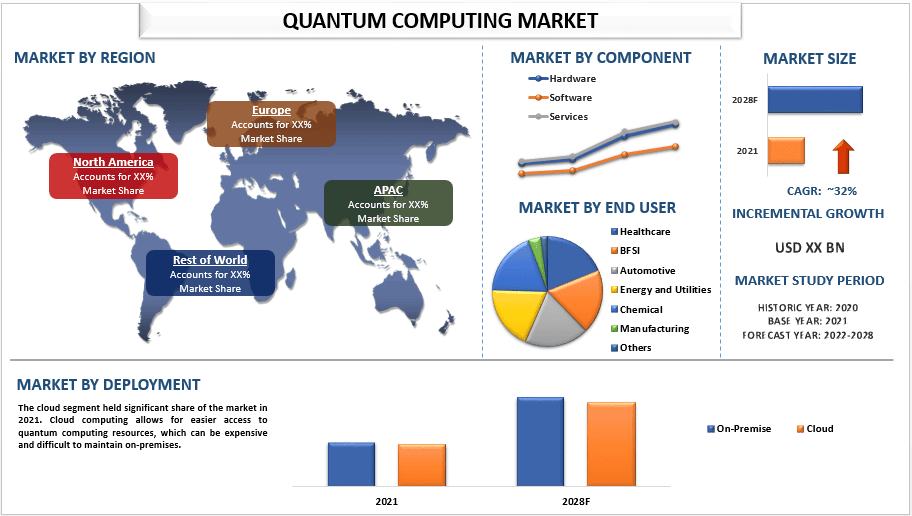
The quantum computing market is expected to grow at a strong CAGR of around 32% during the forecast period. The demand for high-performance computing is driving the growth of the quantum computing market. The desire for SaaS business models, increasing data centre workloads, and complex processor architectures in conventional binary computing systems are all contributing to the growth of the global quantum computing market. Data is maintained in tiny transistors, each of which can only hold one “bit” of information, such as a 0 or 1, in a conventional binary computer system. The superposition phenomenon allows for simultaneous storage and processing of 1 and 0, making quantum computing much more powerful than a classical-quantum system.
Some of the major players operating in the market include IBM Corporation; D-Wave Systems Inc.; Cambridge Quantum Computing Ltd.; Intel Corporation; Rigetti & Co, Inc.; Google LLC; Quantica Computacao; Zapata Computing; XANADU; and Accenture Plc. Several M&As along with partnerships have been undertaken by these players to facilitate customers with hi-tech and innovative products/technologies.
Insights Presented in the Report
“Amongst deployment, the cloud segment held a significant share of the market in 2021”
Based on deployment, the market is bifurcated into on-premise and cloud. The cloud segment held significant share of the market in 2021. Cloud computing allows for easier access to quantum computing resources, which can be expensive and difficult to maintain on-premises. This has led to increased investment and strategic alliances in the cloud quantum computing space. One recent investment in the cloud quantum computing market was made by IBM, which announced in 2021 that it would invest $100 million in building a quantum computing center in Cleveland, Ohio. This center will focus on developing quantum computing applications in the cloud and will be available to businesses and researchers.
“Amongst end user, the healthcare category to grow with high CAGR during the forecast period”
By end user, the market is segmented into healthcare, BFSI, automotive, energy and utilities, chemical, manufacturing, and others. The healthcare segment is anticipated to grow with a high CAGR during the forecast period. Quantum computing has the potential to transform healthcare by providing more accurate and efficient methods for drug discovery, medical imaging, and personalized medicine. Moreover, the healthcare segment in the quantum computing market is an area that is seeing increased investment and strategic alliances. For instance, in 2019, Biogen announced a partnership with IonQ to use its quantum computing platform to accelerate the discovery and development of drugs for neurological disorders. IonQ’s quantum computing technology is expected to improve the accuracy of drug simulations and reduce the time required for drug development.
“Amongst component, the software segment held a significant share of the market in 2021”
Based on component, the market is segmented into hardware, software, and services. The software segment held a significant share of the market in 2021. The software segment of the quantum computing market is focused on developing and providing software tools, platforms, and programming languages for the development and optimization of quantum algorithms and applications. This segment plays a critical role in the advancement of quantum computing by providing the necessary infrastructure and tools for researchers and developers to explore the potential of quantum computing. In recent years, the quantum software market has witnessed significant growth, with increasing investment and strategic alliances. Major players in the industry include IBM, Microsoft, Google, Rigetti, and D-Wave, among others.
“North America to grow with significant CAGR during the forecast period”
North America is anticipated to grow with a significant CAGR during the forecast period mainly due to the rising hefty investments by government as well as private firms in the development of this technology. Moreover, the presence of major key players and rapid investment by them is also driving regional growth. For instance, in February 2023, IBM announced a new partnership with the Canadian government to invest USD 1 billion over the next five years in quantum computing research and development.
Quantum Computing Market Report Coverage
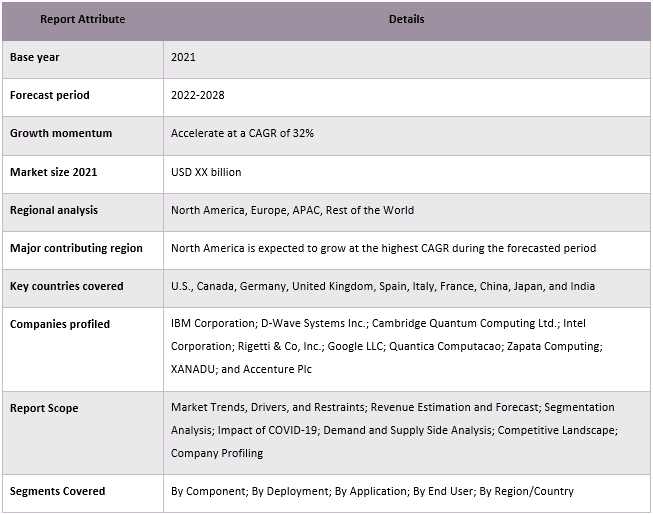
Reasons to buy this report:
- The study includes market sizing and forecasting analysis validated by authenticated key industry experts.
- The report presents a quick review of overall industry performance at one glance.
- The report covers an in-depth analysis of prominent industry peers with a primary focus on key business financials, product portfolios, expansion strategies, and recent developments.
- Detailed examination of drivers, restraints, key trends, and opportunities prevailing in the industry.
- The study comprehensively covers the market across different segments.
- Deep dive regional level analysis of the industry.
Customization Options:
The global quantum computing market can further be customized as per the requirement or any other market segment. Besides this, UMI understands that you may have your own business needs, hence feel free to connect with us to get a report that completely suits your requirements.
Table of Contents
Research Methodology for the Quantum Computing Market Analysis (2022-2028)
Analyzing the historical market, estimating the current market, and forecasting the future market of the global quantum computing market were the three major steps undertaken to create and analyze the adoption of quantum computing in major regions globally. Exhaustive secondary research was conducted to collect the historical market numbers and estimate the current market size. Secondly, to validate these insights, numerous findings and assumptions were taken into consideration. Moreover, exhaustive primary interviews were also conducted, with industry experts across the value chain of the global quantum computing market. Post assumption and validation of market numbers through primary interviews, we employed a top-down/bottom-up approach to forecasting the complete market size. Thereafter, market breakdown and data triangulation methods were adopted to estimate and analyze the market size of segments and sub-segments of the industry pertains to. Detailed methodology is explained below:
Analysis of Historical Market Size
Step 1: In-Depth Study of Secondary Sources:
Detail secondary study was conducted to obtain the historical market size of the quantum computing market through company internal sources such as annual reports & financial statements, performance presentations, press releases, etc., and external sources including journals, news & articles, government publications, competitor publications, sector reports, third-party database, and other credible publications.
Step 2: Market Segmentation:
After obtaining the historical market size of the quantum computing market, we conducted a detailed secondary analysis to gather historical market insights and share for different segments & sub-segments for major regions. Major segments are included in the report as component, deployment, application, and end user. Further country-level analyses were conducted to evaluate the overall adoption of testing models in that region.
Step 3: Factor Analysis:
After acquiring the historical market size of different segments and sub-segments, we conducted a detailed factor analysis to estimate the current market size of the quantum computing market. Further, we conducted factor analysis using dependent and independent variables such as component, deployment, application, and end user of the quantum computing market. A thorough analysis was conducted for demand and supply-side scenarios considering top partnerships, mergers and acquisitions, business expansion, and product launches in the quantum computing market sector across the globe.
Current Market Size Estimate & Forecast
Current Market Sizing: Based on actionable insights from the above 3 steps, we arrived at the current market size, key players in the global quantum computing market, and market shares of the segments. All the required percentage shares split, and market breakdowns were determined using the above-mentioned secondary approach and were verified through primary interviews.
Estimation & Forecasting: For market estimation and forecast, weights were assigned to different factors including drivers & trends, restraints, and opportunities available for the stakeholders. After analyzing these factors, relevant forecasting techniques i.e., the top-down/bottom-up approach were applied to arrive at the market forecast for 2028 for different segments and sub-segments across the major markets globally. The research methodology adopted to estimate the market size encompasses:
- The industry’s market size, in terms of revenue (USD) and the adoption rate of the quantum computing market across the major markets domestically
- All percentage shares, splits, and breakdowns of market segments and sub-segments
- Key players in the global quantum computing market in terms of products offered. Also, the growth strategies adopted by these players to compete in the fast-growing market
Market Size and Share Validation
Primary Research: In-depth interviews were conducted with the Key Opinion Leaders (KOLs) including Top Level Executives (CXO/VPs, Sales Head, Marketing Head, Operational Head, Regional Head, Country Head, etc.) across major regions. Primary research findings were then summarized, and statistical analysis was performed to prove the stated hypothesis. Inputs from primary research were consolidated with secondary findings, hence turning information into actionable insights.
Split of Primary Participants in Different Regions
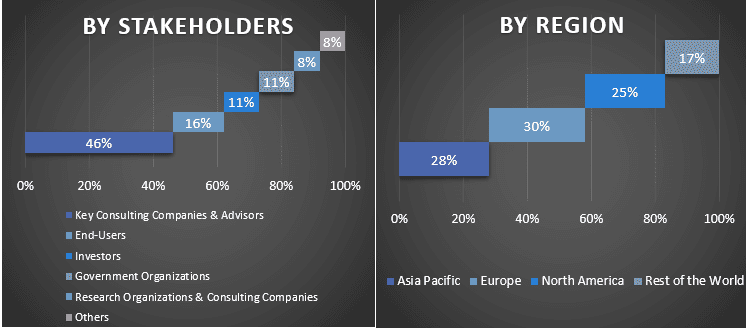
Market Engineering
The data triangulation technique was employed to complete the overall market estimation and to arrive at precise statistical numbers for each segment and sub-segment of the global quantum computing market. data was split into several segments & sub-segments post studying various parameters and trends in the areas of the component, deployment, application, and end user in the global quantum computing market.
The main objective of the Global Quantum Computing Market Study
The current & future market trends of the global quantum computing market were pinpointed in the study. Investors can gain strategic insights to base their discretion for investments on the qualitative and quantitative analysis performed in the study. Current and future market trends determined the overall attractiveness of the market at a regional level, providing a platform for the industrial participant to exploit the untapped market to benefit from a first-mover advantage. Other quantitative goals of the studies include:
- Analyze the current and forecast market size of the quantum computing market in terms of value (USD). Also, analyze the current and forecast market size of different segments and sub-segments
- Segments in the study include areas of the component, deployment, application, and end user
- Define and analysis of the regulatory framework for the quantum computing industry
- Analyze the value chain involved with the presence of various intermediaries, along with analyzing customer and competitor behaviors of the industry
- Analyze the current and forecast market size of the quantum computing market for the major region
- Major countries of regions studied in the report include Asia Pacific, Europe, North America, and the Rest of the World
- Company profiles of the quantum computing market and the growth strategies adopted by the market players to sustain in the fast-growing market
- Deep dive regional level analysis of the industry
Related Reports
Customers who bought this item also bought

